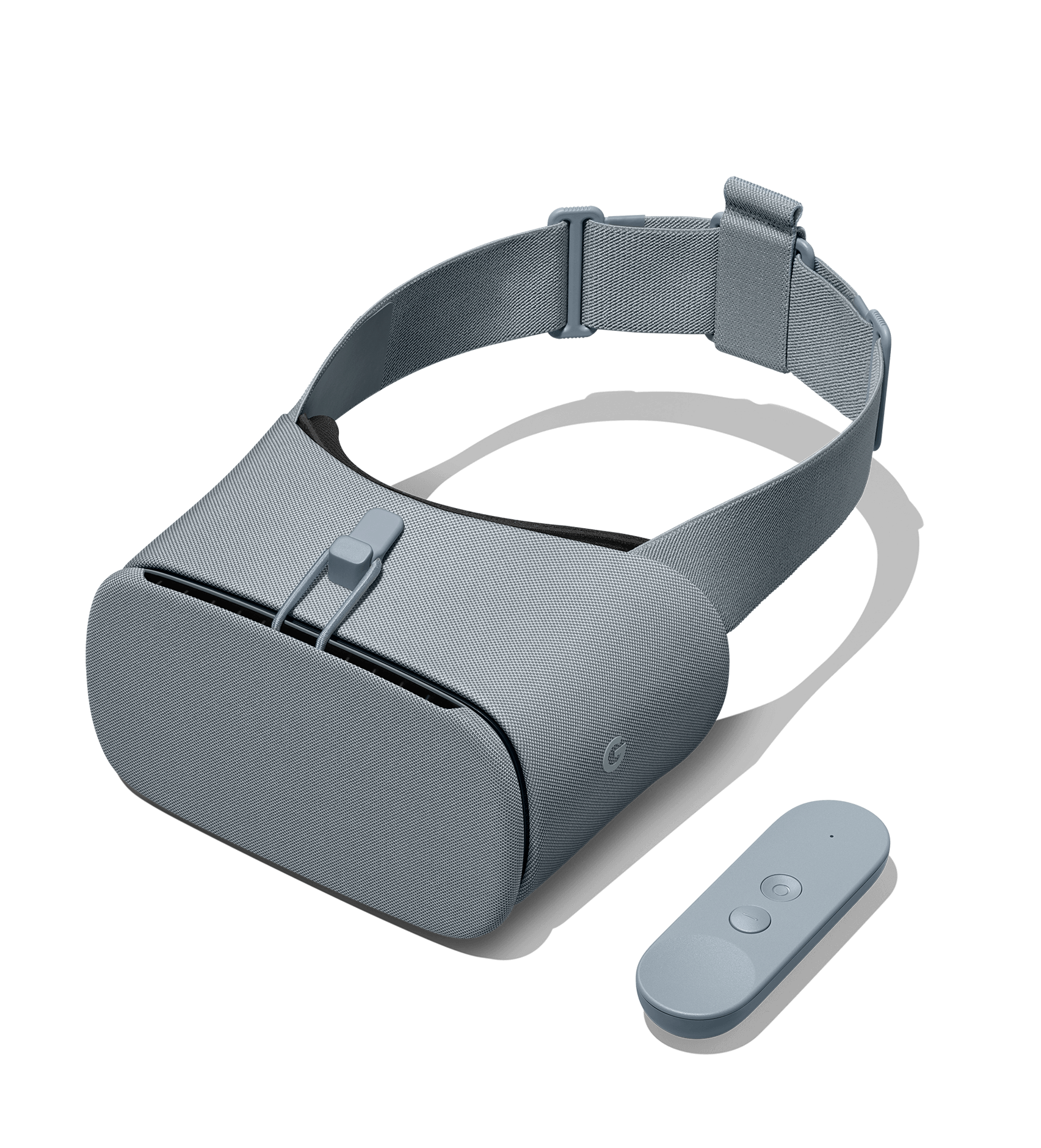Past, Present, and Future of Google Daydream
The Google Daydream platform first unveild at the 2016 I/O developer conference, with the first generation headset released on November 10th 2016. However, Daydream is already Google’s second attempt at the VR industry, followed by the famous Google Cardboard entry level headset.
Google’s Daydream is a virtual reality platform designed specifically for the Android mobile OS system. While smartphone compatible phone with the platform is used in the Google Daydream View VR headset, therefore is labeled Daydream-ready.

Image credit: Google
The first generation Daydream View is powered by Daydream-ready smartphones, rather than PCs. As a result, the phones is situated in the front of the headset to view through the lenses. The View sets apart from previous headsets by it’s light-weight cloth material design. As a result, the headset is best praised for ergonomic design and weight distribution. The device incorporates capacitive nubs and an NFC chips to simply the setup process.
The headset includes a wireless controller, which is for interacting with the virtual environment. Embedded sensors allows orientation tracking of the controller and hand. The controller can be stored inside the headset when not in use. It is equipped with a touch pad, several functional buttons, and a status light. The device is rechargeable via USB-C cable, which can be purchased from the Google Store.
The VR mode allow users to run immersive VR apps such as YouTube, Google Map Street View, Google Play Movies & TV, and Google Photos. Futhermore, other entertainment apps such as Ubisoft and Netflix are also included.
Future of Daydream View
The second generation Daydream View was announced in 2017, with price starting at $99. The new headset include a slightly altered design and improved lenses for better field of view. Lenovo’s Mirage Solo headset was unveiled at the 2018 CES. It is the first standalone headset running the Daydream platform, powered by Qualcomm’s Snapdragon 835 system-on-chip. The Mirage Solo has 4 GB of ram and 64 GB or storage capacity expandable via microSD. It has dual mic, a 3.5mm headphone jack, 4,000 mAh battery, and a 2560 x 1440 LCD screen. The Mirage Solo supports Google Worldsense, an improved position tracking technology.
The Mirage Solo will be released around summertime 2018, and will be priced at $400.
For a list of Daydream compatible phones, check this link
